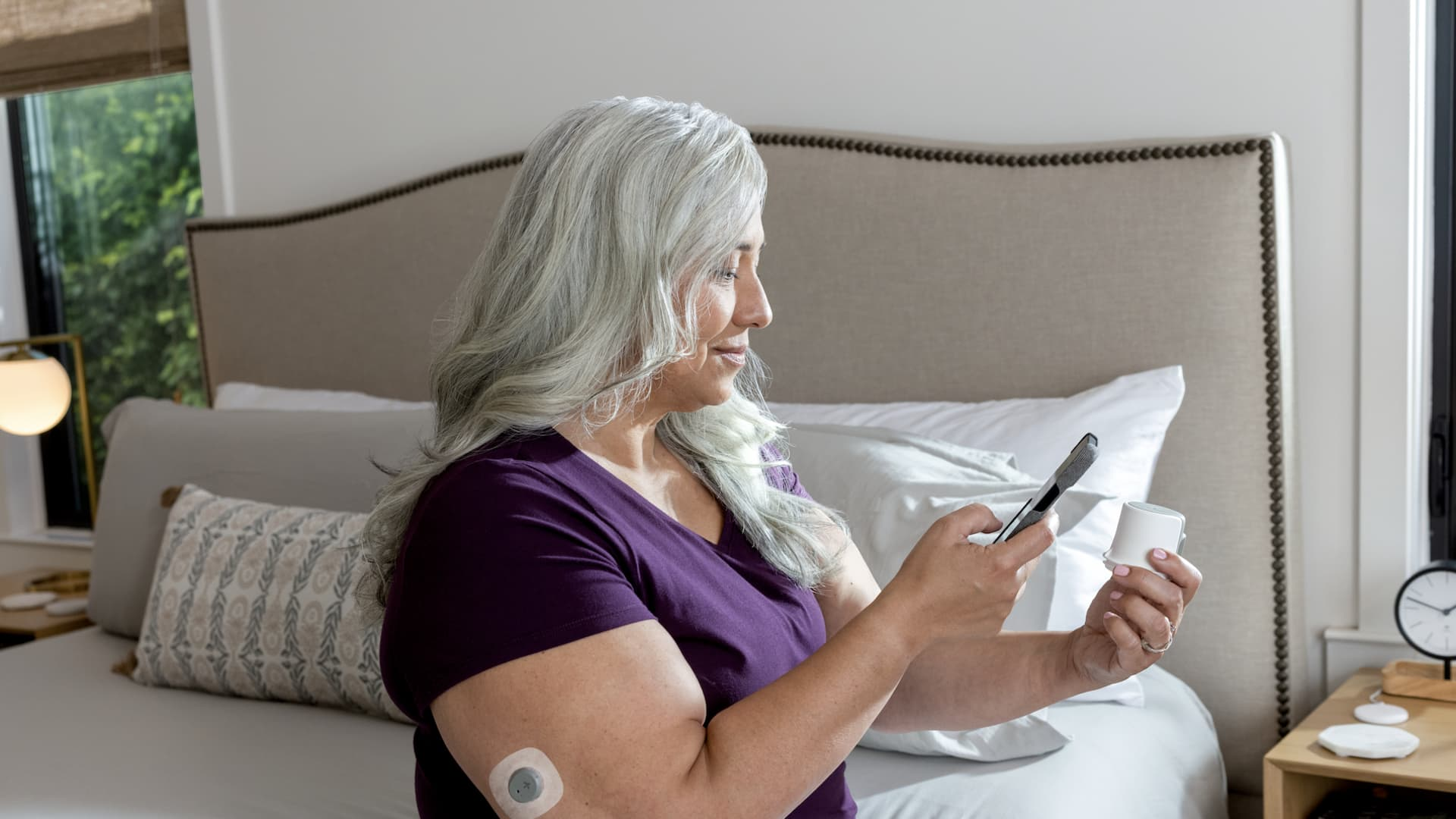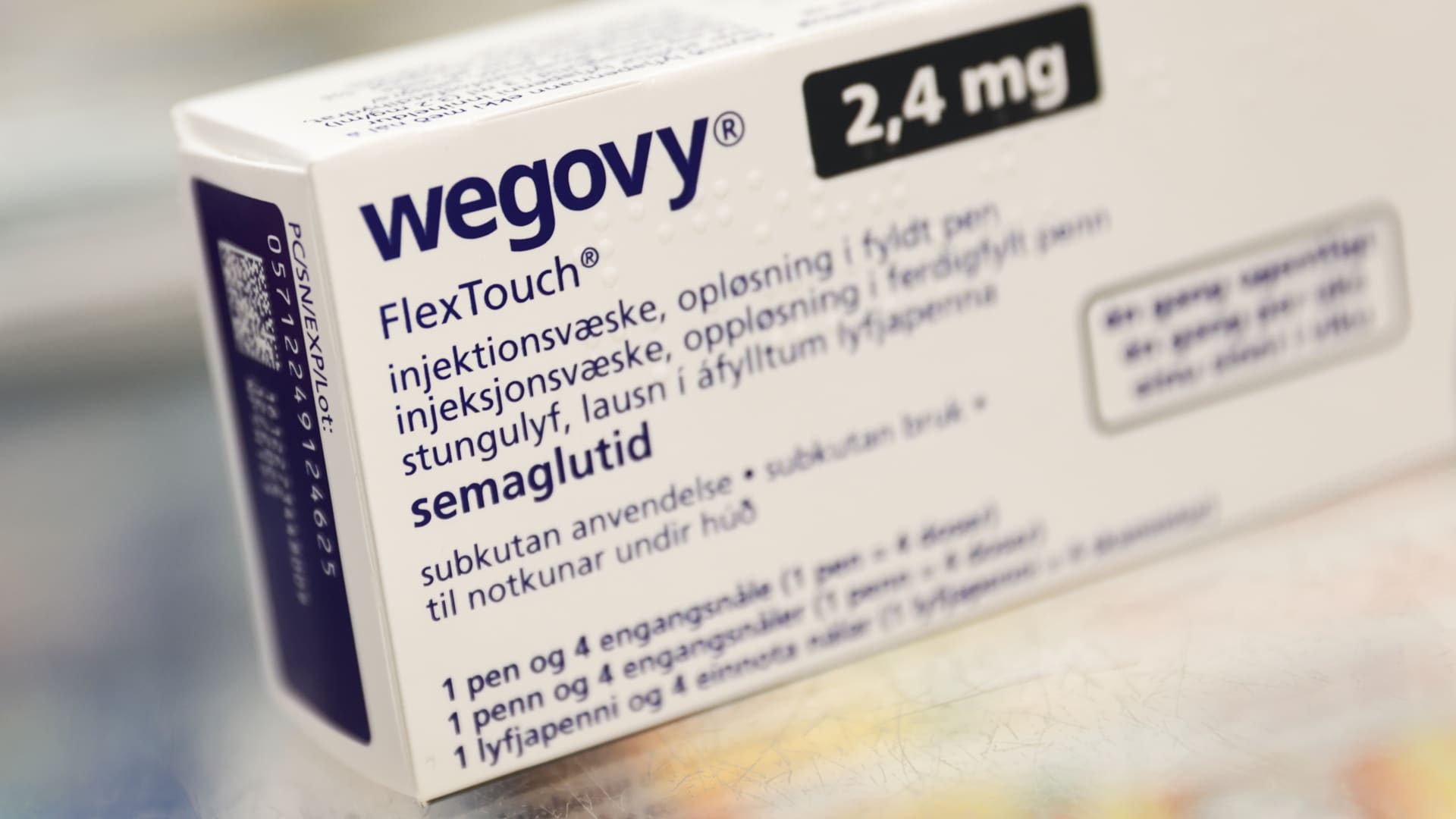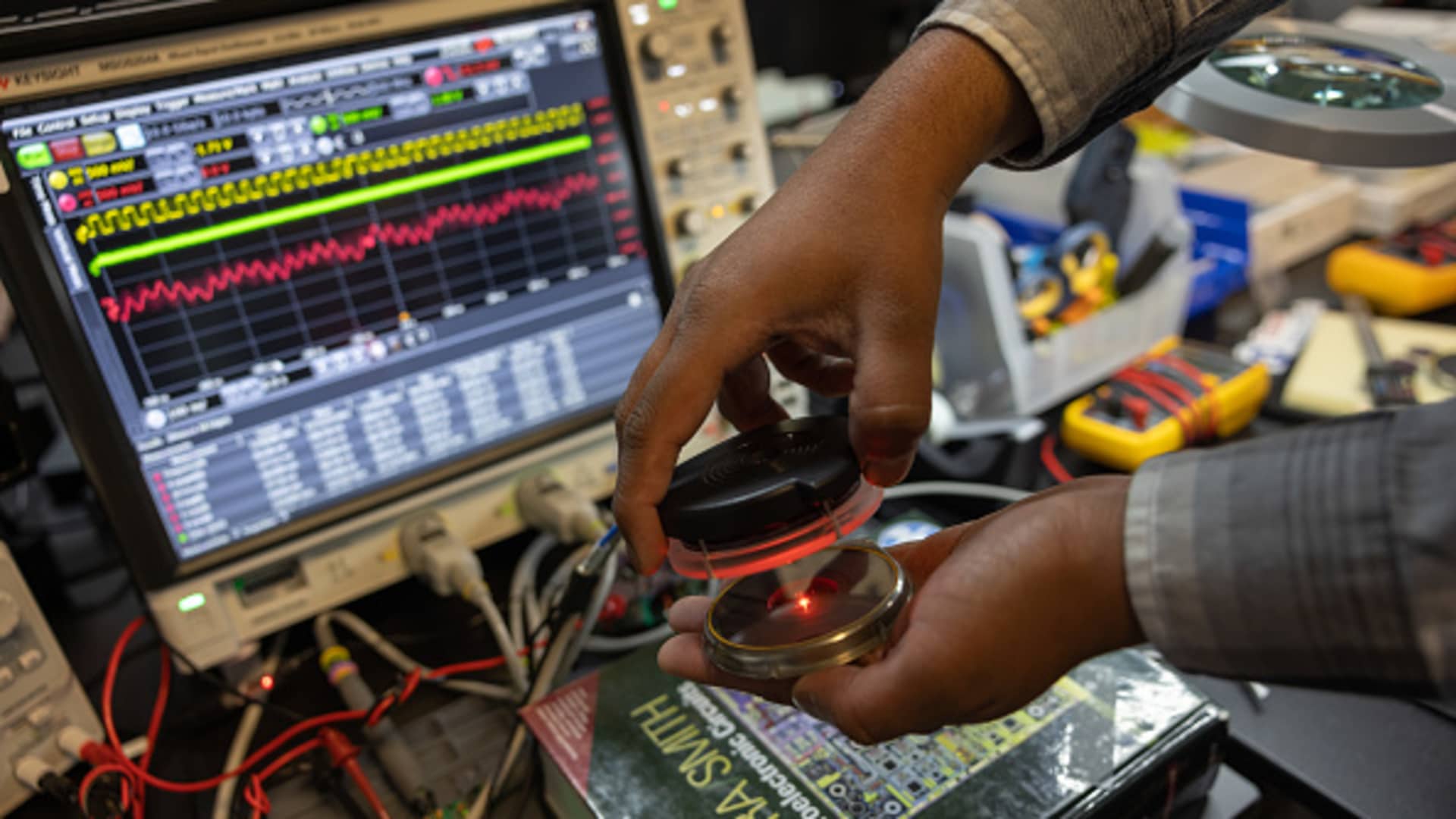User using Dexcom Stelo CGM.
Courtesy of Dexcom
Dexcom On Monday, Stelo, the new over-the-counter continuous glucose monitor, announced that it is officially available for purchase in the U.S.
Glucose is a type of sugar that people get from food and is the body's main source of energy. Continuous glucose monitors, or CGMs, are small sensors that are inserted through the skin to measure glucose levels in real time. They are typically prescribed to patients with diabetes, as they can help alert users, their loved ones, and their doctors about emergencies.
Stelo is primarily intended for patients with prediabetes or type 2 diabetes who do not use insulin, although it can also be purchased by people without either condition. Users can purchase a one-month supply online for $99 or sign up for an ongoing subscription for $89 per month.
Dexcom said patients also have the option to use their Flexible Spending Accounts and Health Savings Accounts to pay for Stelo, according to a statement.
The company already offers continuous glucose monitors for patients with Type 1 and Type 2 diabetes, but Stelo is Dexcom’s first product that doesn’t require a prescription. While most Type 1 patients can already get insurance coverage for the sensors, Stelo is now accessible to millions of Type 2 patients who haven’t been able to get prescriptions or coverage. It also marks the company’s official foray into a new and potentially lucrative prediabetes market.
Dexcom said there are more than 125 million Americans with prediabetes or type 2 diabetes who do not use insulin, according to a statement. The company designed Stelo to help teach this patient population how to keep their glucose levels within a healthy range.
“The idea is to help people, over time, learn about dietary choices and habits and how those affect glucose,” Jake Leach, Dexcom's chief operating officer, told CNBC in an interview. “It's about discovering things that haven't been seen before and then using those to create healthier habits.”
How it works
The U.S. Food and Drug Administration approved Stelo in March. It was the first over-the-counter continuous glucose monitor to be cleared for use, although Dexcom's competitor Abbot It received approval for two similar devices in June.
Leach said Dexcom is working with Amazon to fulfill Stelo deliveries. Users with a subscription can choose to skip or adjust their delivery date, but it will typically be scheduled within 30 days of their initial sign-up.
Stelo is worn on the upper arm and lasts 15 days before it needs to be replaced. It is gray, about the size of a quarter, and about half an inch thick.
The sensor wirelessly transmits data to a smartphone app. When users are getting set up, they select whether they have type 2 diabetes, prediabetes, or neither. This helps set their “target range,” which is the glucose level Dexcom wants users to try to maintain. The target range is based on established medical standards, and most people fall between 70 and 180 mg/dL, according to the American Diabetes Association.
When you open the Stelo home page, you see your latest reading, which updates every 15 minutes. You also see a graph of your daily readings, which includes a shaded green area to indicate your target range. If you scroll down, you see a summary of the time spent in your target range over time.
Each person's glucose levels vary, but Stelo will send users a notification when they experience a substantial spike. Glucose spikes occur when the amount of sugar present in the bloodstream increases rapidly and then decreases. This usually happens after eating.
In the short term, spikes may cause feelings of fatigue, but high glucose levels can lead to more serious health problems, such as diabetes, heart disease and kidney disease, over time, according to the Centers for Disease Control and Prevention. That's why Dexcom wants users to try to keep their levels within Stelo's target range.
The tab next to the home page is the “Events” page, where Stelo users can log meals, activities, finger sticks or other notes. Leach said it’s very important for users to log an entry when they experience a large glucose spike so they can reflect on what might be causing it.
Stelo notifies users of major spikes, so they won’t necessarily get an alert every time their levels rise. Leach said this is an intentional design choice that aims to draw attention to the larger swings patients experience.
“Even for someone who has normal glucose levels and occasional spikes, it will look for the most impactful spikes and then try to engage the user around, 'Okay, what happened there?'” he said.
And for users who want to dig deeper into their glucose and understand what causes spikes, there is a wealth of educational materials in the app's “Learn” tab. Articles are short, sometimes just a few sentences long, and are divided into categories like “Stelo Basics,” “Glucose Deep Dive,” “Nutrition,” “Exercise,” “Sleep,” and “Stress.”
CNBC tests Stelo
The Stelo app
Courtesy of Dexcom
I have been testing Stelo since the beginning of August. Overall, I think it has been easy and useful to use.
When I received my monitors in the mail, the first thing I did was put the sensor on my arm and pair it with the Stelo app. I found this process very simple: the app explained what to do with clear, step-by-step instructions.
I cleaned the back of my right arm, placed the Dexcom applicator there, pressed the button, and put the CGM on. It happens quickly and doesn't hurt at all.
The monitor connects to the Stelo app via Bluetooth and then takes about half an hour to warm up.
This is where I ran into some issues at first. Once my device warmed up, I got an error message that said “Brief problem with sensor.” The message told me not to take off the CGM and that the problem was temporary. I left it on during the day, but at night, I noticed some light bleeding. I decided to take the sensor off.
I applied another CGM to my other arm, and it warmed up and worked properly. I've been using it ever since and haven't had any bleeding issues. Leach said that if users have problems with the product, they can message the chat interface on Stelo's website to get a replacement or have their questions answered there.
Once I was up and running with my second sensor, everything was smooth sailing.
I have found the Stelo app to be simple and easy to use. I never felt… As if I was being overloaded with too much data or too many notifications, and logging meals and exercise is a breeze. Users can also choose to import their sleep and activity data from Apple's Health app or Android's Health Connect app, which I think is a nice touch.
If this is your first time using a CGM, I highly recommend reading the articles under the “Learn” tab. I think Dexcom does a good job of using simple language to explain what glucose is, what affects it, and why it is important.
The longer I wear the sensor, the more I notice the algorithm adapting to me and my habits. I don’t get notifications every time my glucose level spikes, but it does alert me when I’m experiencing a particularly substantial increase. The app is also starting to pick up on my patterns. For example, it recently told me that my glucose level tends to spike between 5 p.m. and 7 p.m., which is usually around the time I eat dinner.
Most of the time, I forget that I'm wearing a sensor. It's waterproof, so I didn't have to worry about it in the shower. And I didn't notice it when I was sleeping. I advise you to be a little careful when wearing long sleeves, as the sensor can get a little snagged, but it's easy to wear all kinds of clothes and jackets over it.
In the short time I've been using Stelo, I've learned a lot about how my body responds to certain foods. Even small adjustments (e.g., eating carbs last) helped me reduce spikes. It's easy to see how CGMs can serve as a valuable window into the body. If you're looking for a simple, accessible way to understand your glucose data, I think Stelo is a solid choice.












